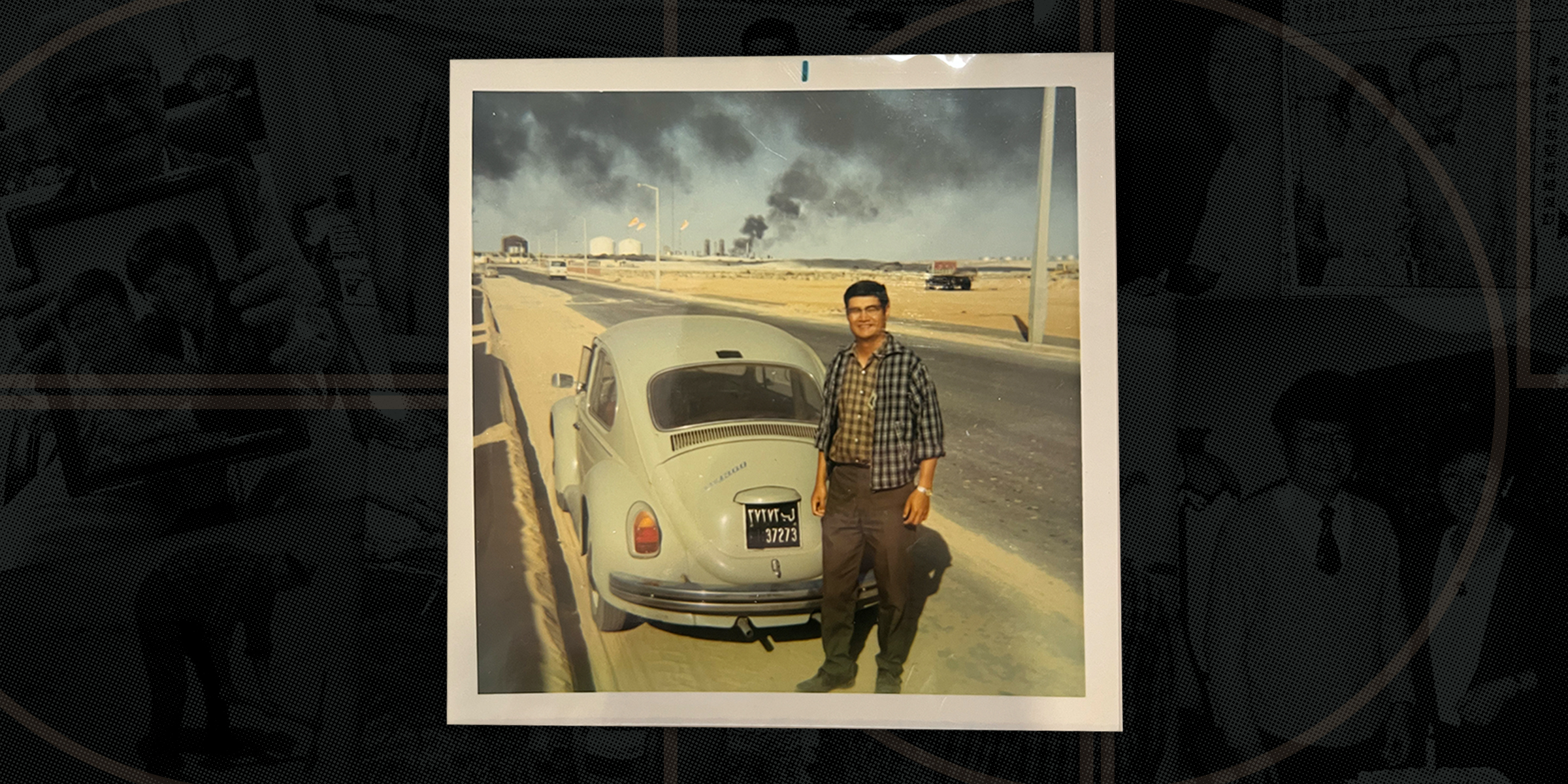MAY 2, 2025
Social by Design: The Life of William Lee
SHARE ON SOCIAL MEDIA

At 91, William Lee strolls through Coterie Cathedral Hill with the easy confidence of someone who has overcome formidable odds.
The retired civil engineer, dressed in a smart button-down shirt and quilted Monty gilet, gestures to San Francisco’s skyline through the floor-to-ceiling windows of his residence. “Every morning, I wake up and I think, ‘yep, still alive, still kicking,’” he says with a grin.
William, who also introduces himself as “Billy,” represents the intersection of old-world heritage and modern luxury.
His one-bedroom residence gives no hint of ostentation, yet every detail, from the precisely arranged family photographs to his organized walk-in closets, speaks to a life of serene elegance – which stands in stark contrast to the harrowing journey of resilience that brought him here.

Victoria and William moments after their wedding ceremony in 1958.
From Guangzhou to San Francisco
Born in Guangzhou, China in 1933, William describes his childhood with disarming candor. “I was not a serious kid – more of a happy-go-lucky type. A little bit spoiled,” he says. He recalls afternoons when the family chauffeur would drive him around town at naptime to help him fall asleep.
These sheltered early years ended abruptly with the breakout of the Second Sino-Japanese War in 1937. As Japanese forces advanced, William’s family fled – first from Canton to Vietnam, then by train to Kunming, and finally to Chongqing, where they spent the next eight years. Despite the hardships and relentless bombing raids, young William maintained a surprising sense of adventure. “Because we [kids] were still young, we thought, ‘This is fun. No big deal.’ But for my parents, it scared the hell out of them,” he reflects.
The war years taught William early lessons in adaptability. His father’s English skills helped forge connections with American military personnel, which occasionally enabled him to bring home precious cans of cheese to mix with rice – a luxury amid wartime scarcity.

William on his way to a work site in Libya in 1970.
Building a New Life
After the war, William moved to Hong Kong, where he attended university and met his wife, Victoria. Their lives in Hong Kong were filled with movies, swimming, and late-night mahjong games with colleagues.
The couple and their young daughter immigrated to San Francisco in 1962, joining William’s parents and initially staying in their living room. “Most immigrants have a story something like that,” he observes. “They keep on working to try to save enough money.”
The transition was significant. In Hong Kong, the family enjoyed an enviable lifestyle complete with household help and regular nights out. In America, they had to start over. “When we came here, we had to do all the household work, so we didn’t have free time,” he says.
Victoria focused on her career as a developer of punch card technology for IBM, while William continued his work in civil engineering. During his 28-year career as an oil refinery designer, William’s work took him around the world, including a stint in Libya where he encountered extreme conditions such as sandstorms, 100-degree heat, and a historic military coup.
“I was there when Gadhafi came to power,” he recounts. “We didn’t know what would happen. The American Consulate sent notes to us: ‘Don’t worry. Stay low. We have a destroyer traveling there. If anything goes down, we’ll pick you up,’” he chuckles. “Jokingly we’d say, ‘Oh yeah, you’ll pick us up, but in body bags.’”

William holds a photo of himself and his wife Victoria.
The Coterie Way, Every Day
William’s daily routine at Coterie balances structure and leisure. His mornings begin with breakfast in the community’s Seven X Seven Grille before heading to the 11th floor for a daily group fitness class. “I meet all the ladies, and I open the bottles. I’m the water boy,” he jokes about his role in the class. These sessions, with their “mild movements,” have become an important addition to his wellness routine.
Afternoons typically involve watching the news or sports, particularly football. Tuesdays are reserved for mahjong – “MJ day,” as he calls it – a tradition that connects him to memories of watching his parents play as a child.
The hallmark of truly exceptional service is its invisibility. “Every day, somebody will come in and clean up the room, make the bed,” he notes appreciatively. The absence of cooking and household chores creates space for meaningful activities and community engagement.
A regular at the community’s cultural gatherings and celebrations, William attends it all – from Oscars parties and live music performances to watching the Blue Angels soar above the building’s rooftop terrace. He particularly enjoyed the Lunar New Year festivities, featuring young dancers and traditional Chinese foods – a beautiful bridge between his heritage and present life. “Whatever is going on, I’ll always be there.”

William at home, preparing to send the day’s emails to friends.
The Powers of Positivity
Despite the recent passing of his beloved Victoria – the two were married for 66 years – William maintains a remarkably sunny outlook. “I’ve learned not to think negatively,” he says. “This is life. You better enjoy it.” He stays connected with his two daughters – one in Sacramento and one in the South Bay – and starts each day by sharing music and jokes via email with a network of about 50 friends.
When asked about the wisdom he’d like to share with younger generations, William emphasizes two principles: “Discipline yourself and forgive others.” His philosophy on worry? “What me, worry?” he says with a laugh, channeling Alfred E. Neuman.
Spanning over nine decades, William’s story is not just about survival but also finding joy in every chapter. His perpetual smile serves as a testament to his philosophy, “You always have to have a positive attitude. That’s what keeps me going.”